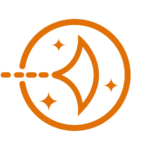Every now and then someone asks me how I’ve got blogs setup on my servers.
As such, I’ve decided to create this post that documents my setup and why I made some of the decisions I did.
Continue readingEvery now and then someone asks me how I’ve got blogs setup on my servers.
As such, I’ve decided to create this post that documents my setup and why I made some of the decisions I did.
Continue reading
I’ve been using Amazon’s Lightsail service for quite a while now and, in general, I’m quite pleased with it.
There are, however, a few things they really could improve on.
Continue readingRecently I encountered a problem with SSL on one of my websites … some web browser could not connect securely.
When I ran a test from Linux, I got the following error:
OpenSSL: error:1408E0F4:SSL routines:ssl3_get_message:unexpected message
After a bit of digging, I found that a recent upgrade to the certbot-auto tool, that creates LetsEncrypt certificates, caused the problem.
The fix was to modify /etc/letsencrypt/options-ssl-apache.conf so that the SSLSessionTickets setting was set to on.
A little more than a year ago I made a major shift in my road bike configuration. I switched from standard tires with tubes to tubeless.
I did this based on recommendations from my friends Steve, Larry, and a few others.
I also upgraded my gravel bike to tubeless at the beginning of the year.
This weekend, however, I switched the road bike back to regular tires with tubes.
Continue readingWinters here in the Chicago area can be pretty brutal … so riding outside from mid-December through mid-March is often not an option.
The only real option, other than going to a gym, is to use an indoor trainer.

There are many trainers available … from dumb, resistance based, trainers to sophisticated smart trainers, to rollers.
I used to use a Kinetic Road Machine resistance trainer … it was OK, but not great. It had a ‘power meter’, that was supposed to report power to trainer apps … but I had no confidence in it (it has no idea how hard you were pedaling, just how fast your wheel was turning).
A few years ago I decided to upgrade to rollers … but could not get the hang of them. There was no resistance … it was like riding on ice.
I decided to get a Wahoo Kickr smart trainer. Wahoo pretty much defined the consumer bike trainer market.
Continue readingI’ve found some more Google weirdness … this time related to how it handles declared ‘canonical’ URL’s.
A canonical URL is a meta tag that you put in a web page that says “This is the correct URL to this particular page”.
Here’s an example of the canonical tag …
<head> <link rel="canonical" href="https://example.com/page.php" /> </head>
However, even when you declare a canonical URL, Google sometimes decides that there is a better URL.
In some cases it’s to another page on your site…

In this case, both pages are pretty similar (actually, they are identical) … but they are two distinct pages and both have their own canonical URL declared.
I noticed at least one case where the canonical URL that Google selected wasn’t even on my site.

Granted, this is the same content … but it’s should not be considered the canonical version of a page on my site.
Unfortunately I really don’t know how to resolve this issue … as Google doesn’t respond to webmaster raised issues related to their search engine functionality.
Many of us who manage websites are familiar with Google’s ‘Search Console‘. The search console is a way for webmasters to manage how Google interacts with our web sites. It provides functions to tell Google what parts of the site to search, what parts to ignore, and determine what pages are doing better than others.
One of the functions it provides is a way to see what parts of a web site that Google has indexed and what part it hasn’t. It also can tell what parts of a site it is ignoring and, to a certian extent, why it’s ignoring them.
One of the reasons that Google might be ignoring a page is because it’s been to be determined to be a ‘Soft 404’.
What’s a Soft 404 error?
Well, a REAL 404 error is a page not found. It’s a function of the web server software. Most web servers provide the ability to use a custom page when a 404 error is encountered. You can see an example of one here.
As for a ‘Soft 404’ … according to Google …
A soft 404 means that a URL on your site returns a page telling the user that the page does not exist and also a 200-level (success) code to the browser.
https://support.google.com/webmasters/answer/181708?hl=en
While some sites might actually do that … handle a page not found error with a friendly page but indicate to the browser that it’s a normal page (200 status code) … I suspect it’s actually a minority of sites (granted, it may be a way to game the system).
However … it turns out that pages that contain the words ‘not found’, ‘error’, ‘authorized’, ‘not allowed’, etc., in the title or body are often treated by Google as a soft 404 error … even if the page isn’t a 404 at all. Additionally, the words do not even need to appear on the page at all. The details of what constitutes a ‘soft 404’ are very mysterious.
Continue reading
Lets Encrypt is an quick & easy way to add SSL to you website.
You can also use Lets Encrypt certificates to help secure your postfix mail server.
SSL SMTP allows mail clients & mail servers to send encrypted data.
Continue reading
Yes, it should be pretty obvious that I think diabetes sucks. Otherwise, why would I be working so hard to help eliminate it.
Anyways, I figured it was high time I started talking a bit more about the topic… so I created a category to discuss diabetes, Tour de Cure, and related topics.
As always, you can donate to my Tour de Cure fundraising ride by visiting diabetessucks.net.
If you are interested in seeing where donors to my ride are from, visit diabetessucks.net/map.
Enjoy!

Amazon Lightsail started offering a managed database service a few months ago.
I took a look at it … and tried it out … a while back and wasn’t really happy with it.
Although it had some nice features, I wasn’t given a ‘root’ (or super user) account and (as I sometimes do) was able to completely trash the instance within a few hours of creating it (I tried to manipulate the permissions on the master database user and ended up revoking all of them).
So I was considering creating my own database server using MySQL on a stand alone Amazon Linux instance.
This would give me a stand alone database with the flexibility to do anything I wanted.
My big concern was network security. I wanted to make sure that only my Lightsail instances would be able to communicate with the database server.
Continue reading